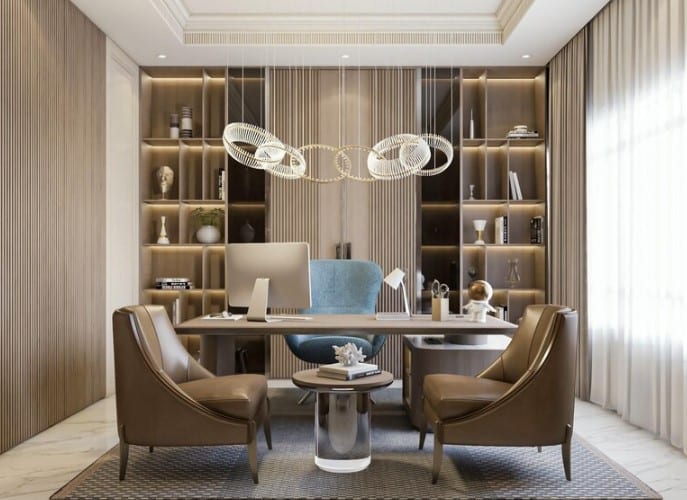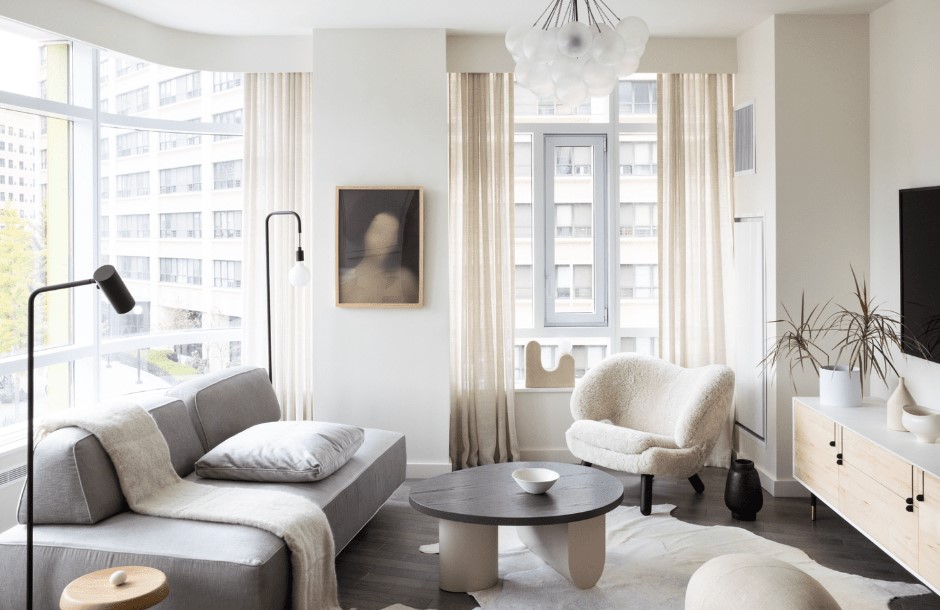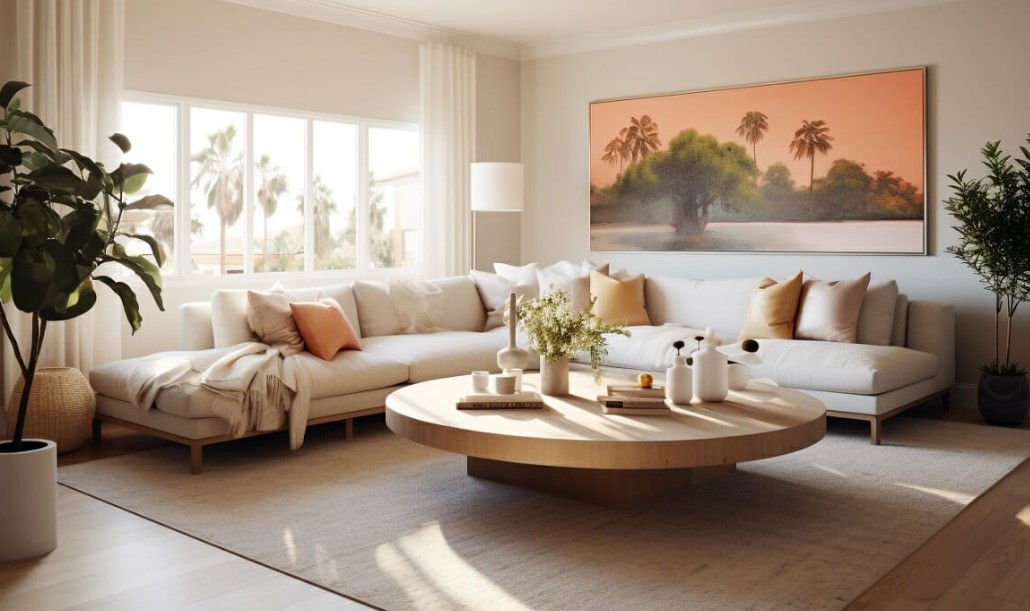In an era where environmental consciousness is becoming increasingly important, eco-friendly interior design stands out as a powerful way to merge aesthetics with sustainability.
This design approach not only focuses on reducing the environmental impact of our living spaces but also enhances the health and well-being of the occupants.
This site Havenblueprint will delve into the principles of eco-friendly interior design, introduce you to sustainable materials, and showcase top products that embody this green philosophy.
Whether you’re renovating a single room or reimagining your entire home, this guide will provide you with the knowledge and tools to make informed, sustainable choices.
Understanding Eco-Friendly Interior Design
Eco-friendly interior design, often referred to as sustainable or green design, is a method of creating living spaces that prioritize environmental responsibility.
It involves careful selection of materials, efficient use of resources, and thoughtful planning to reduce waste and energy consumption.
The goal is to create interiors that are not only beautiful but also contribute to the well-being of the planet and its inhabitants.
One of the key aspects of eco-friendly interior design is the use of sustainable materials.
These include reclaimed wood, bamboo, recycled metals, and natural fibers such as organic cotton or wool.
By choosing materials that have a lower environmental impact, designers can reduce the carbon footprint of a space while also promoting healthier indoor air quality, as many sustainable materials are free from harmful chemicals and toxins.
You can also read : Top Minimalist Interior Design Ideas and Products
The Core Principles of Eco-Friendly Interior Design
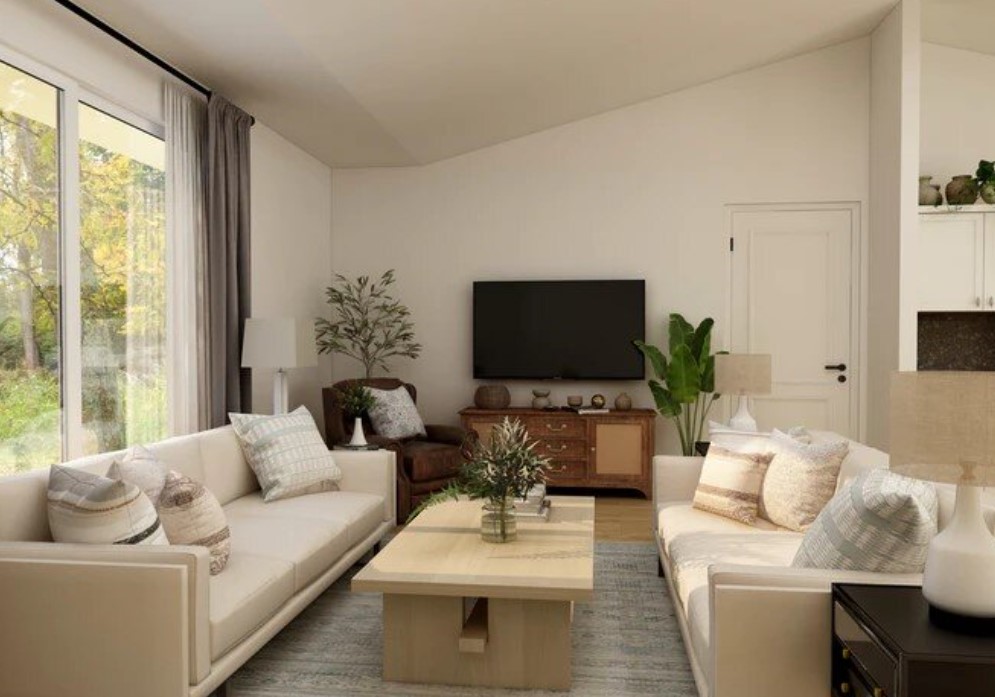
In the evolving landscape of interior design, eco-friendly principles have become increasingly vital. These principles emphasize sustainability, reducing environmental impact, and promoting the health and well-being of occupants.
Incorporating natural materials like reclaimed wood, bamboo, and organic textiles is a cornerstone of eco-friendly design.
These materials not only reduce the demand for new resources but also minimize the carbon footprint associated with production and transportation.
Energy efficiency is another critical aspect of sustainable interior design. Utilizing energy-saving appliances, LED lighting, and smart home technologies helps reduce energy consumption, leading to lower utility bills and a smaller environmental footprint.
Additionally, optimizing natural light through strategic window placement and the use of light-reflecting colors can significantly decrease the need for artificial lighting, further conserving energy.
Lastly, waste reduction is an essential principle in eco-friendly interior design. This can be achieved by repurposing old furniture, choosing products with minimal packaging, and selecting durable, long-lasting materials.
By focusing on these core principles, eco-friendly interior design not only creates aesthetically pleasing spaces but also contributes to a healthier planet, aligning with both consumer values and global sustainability goals.
Sustainable Materials Selection
Sustainable materials are at the heart of eco-friendly interior design. These materials are chosen for their minimal environmental impact, renewability, and non-toxicity.
By opting for sustainable options, you can significantly reduce the ecological footprint of your home. Materials like bamboo, reclaimed wood, and recycled metal are popular choices due to their renewability and durability.
These materials not only help conserve natural resources but also bring unique textures and character to your space.
In addition to using renewable resources, sustainable materials often come with lower emissions during production and are free from harmful chemicals.
For example, low-VOC paints and natural fiber carpets contribute to better indoor air quality, promoting a healthier living environment. Selecting such materials supports both environmental sustainability and personal well-being.
Examples of Sustainable Materials:
- Bamboo: Fast-growing and renewable, bamboo is an excellent alternative to traditional hardwoods. It’s versatile, durable, and can be used for flooring, furniture, and even textiles.
- Recycled Glass: Used in countertops this type of glass is melted and reformed into stunning countertops, tiles, and decorative elements, reducing the need for virgin materials.
- Cork: Harvested from the bark of cork oak trees, cork is a renewable resource that is both insulating and hypoallergenic. It is commonly used for flooring, wall coverings, and furniture.
- Reclaimed Wood: Salvaged from old buildings, barns, or factories, reclaimed wood gives a second life to materials that would otherwise go to waste. It’s ideal for flooring, furniture, and architectural details.
Energy Efficiency
Energy efficiency is another critical component of eco-friendly interior design. By reducing energy consumption, you not only lower your utility bills but also decrease your home’s carbon footprint. This can be achieved through various means, such as:
- Energy-Efficient Lighting: LED bulbs and fixtures consume less energy and last longer than traditional incandescent bulbs.
- Insulation: Proper insulation reduces the need for heating and cooling, leading to significant energy savings.
- Smart Thermostats: These devices learn your habits and adjust the temperature accordingly, optimizing energy use.
- Energy-Efficient Appliances: Choosing appliances with a high energy star rating ensures they use less electricity, reducing overall consumption without sacrificing performance.
- Solar Panels: Installing solar panels can significantly offset your home’s energy usage by harnessing renewable energy, leading to lower electricity costs and a more sustainable energy source.
Waste Reduction and Resource Management
Eco-friendly design also emphasizes reducing waste during the construction and renovation processes. This can be achieved by:
- Choosing Durable Materials: Long-lasting materials reduce the need for frequent replacements.
- Recycling and Upcycling: Repurposing old materials and furniture reduces the demand for new resources.
- Minimizing Construction Waste: Careful planning and precise measurements can help reduce the amount of waste generated during a project.
You can also read : Coastal Interior Design Ideas and Essentials
The Benefits of Eco-Friendly Interior Design
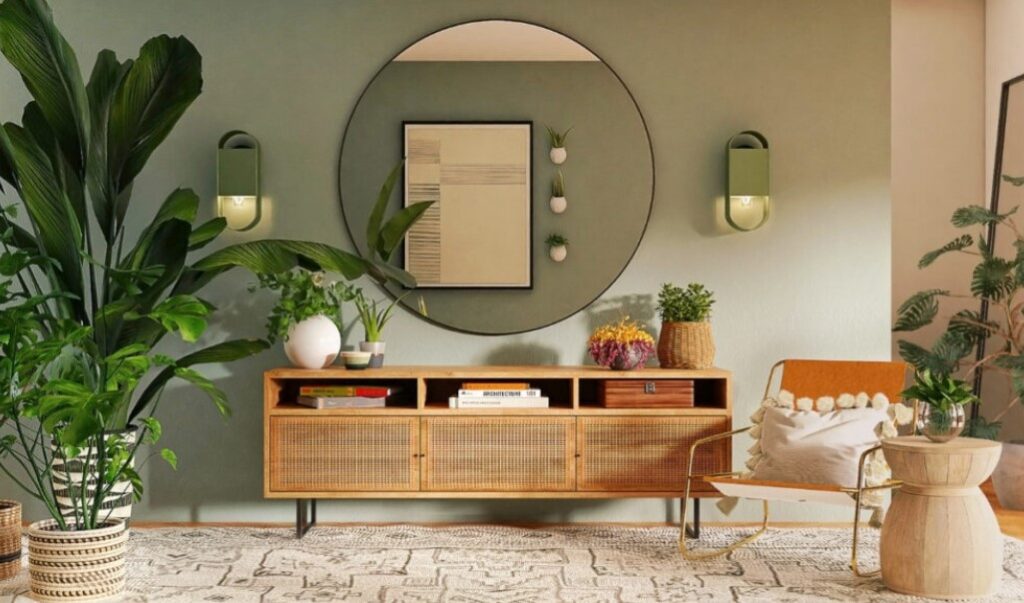
Adopting eco-friendly interior design practices offers a multitude of benefits, both for the environment and for those living in the space.
Environmental Benefits
- Reduced Carbon Footprint: By choosing sustainable materials and energy-efficient products, you significantly reduce the carbon footprint of your home.
- Conservation of Natural Resources: Using renewable resources like bamboo and reclaimed wood helps conserve natural resources and reduces the demand for non-renewable materials.
- Waste Reduction: Eco-friendly design encourages the reuse and recycling of materials, which helps reduce the amount of waste that ends up in landfills.
Health Benefits
- Improved Indoor Air Quality: Many traditional building materials and furnishings contain harmful chemicals like formaldehyde and VOCs (volatile organic compounds). Eco-friendly materials, on the other hand, are often non-toxic and hypoallergenic, contributing to better indoor air quality.
- Thermal Comfort: Sustainable design often incorporates natural ventilation and insulation, leading to a more comfortable living environment.
- Psychological Well-Being: Living in a space that is connected to nature and designed with sustainability in mind can have positive effects on mental health and well-being.
Economic Benefits
- Long-Term Savings: While some eco-friendly products and materials may have a higher upfront cost, they often result in long-term savings due to their durability and energy efficiency.
- Increased Property Value: Homes with eco-friendly features are increasingly sought after by buyers, which can lead to higher property values.
You can also read : Smart Solutions for Small Apartment Interior Design
Top Sustainable Materials for Interior Design
When it comes to eco-friendly interior design, the materials you choose are crucial. Here are some of the top sustainable materials that you can incorporate into your home:
Bamboo
Bamboo is a fast-growing, renewable resource that is incredibly versatile. It can be used for everything from flooring to furniture, and its strength and durability make it a popular choice for eco-friendly interiors.
Bamboo is available in various finishes, allowing it to fit seamlessly into any design style. Bamboo is an ideal material for eco-friendly interiors, celebrated for its rapid growth and renewable qualities.
Its natural strength and durability make it suitable for a wide range of uses, from flooring and furniture to decorative accents.
With various finishes available, bamboo can complement any design style, bringing a warm, organic feel to modern and traditional spaces alike.
As a sustainable alternative to hardwood, bamboo is a top choice for those looking to create a stylish yet environmentally conscious home.
- Benefits: Renewable, durable, versatile.
- Drawbacks: Can be susceptible to moisture damage, especially in high-humidity areas.
- Price Range: $3-$8 per square foot for flooring.
- Where to Buy: Bamboo Flooring at Home Depot
Reclaimed Wood
Reclaimed wood is not only sustainable but also adds a unique, rustic charm to any space. This wood is salvaged from old buildings, barns, and factories, giving it a history and character that new wood simply can’t match.
Reclaimed wood can be used for flooring, furniture, and architectural details like beams and paneling.
- Benefits: Unique appearance, environmentally friendly, durable.
- Drawbacks: Can be expensive and requires careful sourcing to ensure quality.
- Price Range: $5-$20 per square foot, depending on the type and source.
- Where to Buy: Reclaimed Wood at Etsy
Cork

Cork is a sustainable material harvested from the bark of cork oak trees. It regenerates quickly, making it a renewable resource. Cork is naturally insulating, hypoallergenic, and resistant to mold and mildew, making it an excellent choice for flooring and wall coverings.
- Benefits: Renewable, insulating, hypoallergenic, moisture-resistant.
- Drawbacks: Can be prone to scratches and dents, particularly in high-traffic areas.
- Price Range: $3-$12 per square foot.
- Where to Buy: Cork Flooring at Wayfair
Recycled Glass
Recycled glass is made from post-consumer glass that is melted down and formed into new products. This process reduces the need for new raw materials and results in stunning, unique countertops, tiles, and decorative elements.
- Benefits: Sustainable, unique appearance, durable.
- Drawbacks: Can be expensive and may require professional installation.
- Price Range: $50-$100 per square foot for countertops.
- Where to Buy: Recycled Glass Countertops at IceStone
You can also read : Your Living Room Interior Design Inspiration Ideas and Products
Top Eco-Friendly Products for Your Home
In addition to sustainable materials, incorporating eco-friendly products into your interior design can further enhance the sustainability of your home. Here are some top choices:
Organic Cotton Bedding
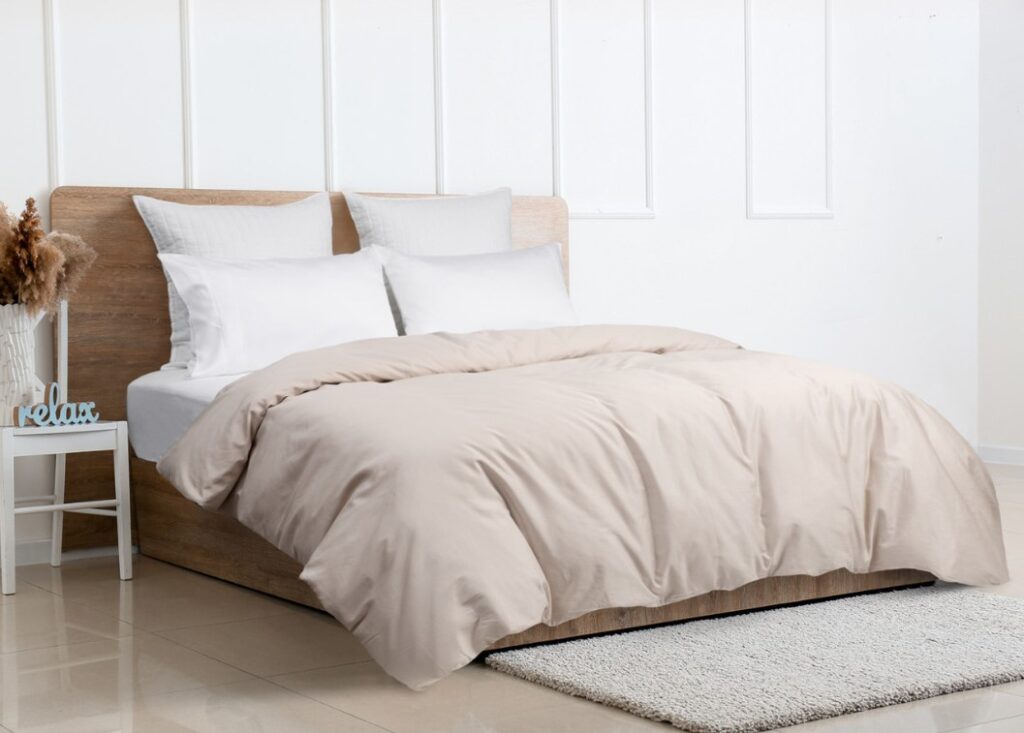
Organic cotton bedding is made from cotton grown without synthetic pesticides or fertilizers, making it a healthier option for both you and the environment. This type of bedding is soft, breathable, and available in a variety of styles and colors.
- Benefits: Soft, breathable, free from harmful chemicals.
- Drawbacks: Can be more expensive than conventional cotton bedding.
- Price Range: $50-$200 for a full bedding set.
- Where to Buy: Organic Cotton Bedding at West Elm
Low-VOC Paint
Traditional paints can emit VOCs (volatile organic compounds) into the air, which can contribute to indoor air pollution and have negative health effects.
Low-VOC paints are a safer alternative, releasing fewer harmful chemicals into the air while still providing a durable, attractive finish.
- Benefits: Low odor, safer for indoor air quality, durable.
- Drawbacks: Slightly higher cost than standard paint.
- Price Range: $30-$60 per gallon.
- Where to Buy: Low-VOC Paint at Sherwin-Williams
Recycled Glass Countertops
Recycled glass countertops are an eco-friendly alternative to traditional stone surfaces like granite or marble.
These countertops are made from recycled glass, which is melted and formed into durable, beautiful surfaces. Each countertop is unique, with a variety of colors and patterns available.
- Benefits: Sustainable, unique, durable.
- Drawbacks: Can be expensive, may require professional installation.
- Price Range: $50-$100 per square foot.
- Where to Buy: Recycled Glass Countertops at IceStone
Solar-Powered Lighting
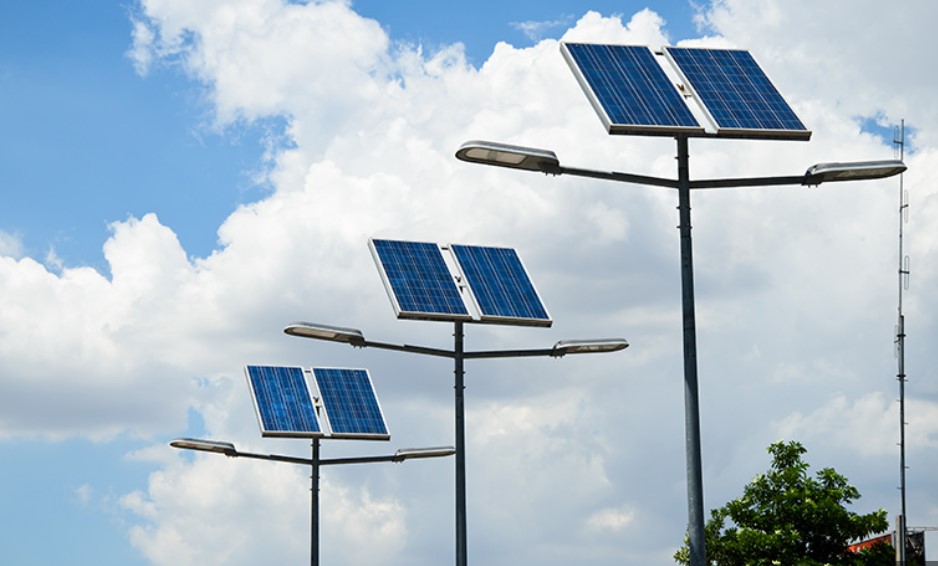
Solar-powered lighting is an energy-efficient way to illuminate both indoor and outdoor spaces. These lights use solar panels to capture and store energy from the sun, which is then used to power the lights at night. Solar-powered lighting is available in a wide range of styles, from garden lights to indoor fixtures.
- Benefits: Energy-efficient, renewable, easy to install.
- Drawbacks: Dependent on sunlight, may not be as bright as traditional lighting.
- Price Range: $20-$100 per light fixture.
- Where to Buy: Solar-Powered Lighting at Amazon
Comparing Eco-Friendly Products by Use Case
When selecting eco-friendly products for your home, it’s important to consider how each product will be used and the specific needs it addresses. Here’s a comparison of some top eco-friendly products based on their use cases:
Flooring
- Bamboo vs. Reclaimed Wood vs. Cork: Bamboo is ideal for modern, sleek designs and is highly durable. Reclaimed wood offers a rustic, vintage look but can be more expensive and harder to source. Cork is great for homes with allergies or in need of extra insulation but may not be suitable for high-traffic areas due to its susceptibility to dents and scratches.
Countertops
- Recycled Glass vs. Traditional Stone: Recycled glass countertops are a sustainable and unique alternative to traditional stone surfaces. They offer a variety of colors and patterns but can be more expensive and may require professional installation. Traditional stone like granite or marble is durable and classic but has a higher environmental impact.
Bedding
- Organic Cotton vs. Conventional Cotton: Organic cotton bedding is free from harmful chemicals, making it a healthier option for both you and the environment. It is typically softer and more breathable than conventional cotton but can be more expensive.
Lighting
- Solar-Powered vs. Traditional: Solar-powered lighting is a great option for outdoor spaces or areas with plenty of sunlight. It is energy-efficient and easy to install but may not be as bright as traditional electric lighting. Traditional lighting offers consistent brightness but has a higher environmental impact due to energy consumption.
How to Buy Eco-Friendly Products
When purchasing eco-friendly products, it’s important to buy from reputable sources that prioritize sustainability. Here are some tips on where and how to buy these products:
- Research Brands: Look for brands that are committed to sustainability and transparency in their sourcing and manufacturing processes.
- Read Labels: Check for certifications like FSC (Forest Stewardship Council) for wood products, GOTS (Global Organic Textile Standard) for textiles, and ENERGY STAR for appliances.
- Shop Online: Many online retailers specialize in eco-friendly products, offering a wide range of options that may not be available in local stores. Websites like Etsy, West Elm, and Amazon have dedicated sections for sustainable products.
- Visit Local Stores: Supporting local businesses that offer eco-friendly products is another great option. Many small retailers focus on sustainable goods and can provide personalized recommendations.
Where to Buy Eco-Friendly Products
Here are some recommended retailers for purchasing eco-friendly interior design products:
- West Elm: Known for its stylish and sustainable home goods, West Elm offers a wide range of eco-friendly furniture, textiles, and decor.
- Etsy: This online marketplace features a vast selection of handmade and vintage items, including reclaimed wood furniture, organic cotton textiles, and recycled glass decor.
- Amazon: Amazon has a dedicated section for eco-friendly products, including solar-powered lighting, organic bedding, and low-VOC paints.
- Home Depot: A go-to source for building materials and home improvement products, Home Depot offers sustainable options like bamboo flooring, cork tiles, and ENERGY STAR-rated appliances.
- IKEA: Known for its affordable, modern furniture, IKEA also offers a range of eco-friendly products, including sustainably sourced wood furniture and energy-efficient lighting.
Frequently Asked Questions (FAQs)
What is eco-friendly interior design?
Eco-friendly interior design focuses on creating living spaces that are environmentally responsible and resource-efficient. It involves using sustainable materials, reducing waste, and prioritizing energy efficiency.
How can I make my home more eco-friendly?
You can make your home more eco-friendly by choosing sustainable materials, using energy-efficient appliances and lighting, reducing waste, and incorporating natural elements like plants and natural lighting.
Are eco-friendly products more expensive?
While some eco-friendly materials and products can be more expensive upfront, they often offer long-term savings due to their durability and energy efficiency. Additionally, the environmental benefits of choosing sustainable options can outweigh the initial costs.
Conclusion
Embracing eco-friendly interior design ideas is a powerful way to create a home that is not only beautiful but also sustainable and healthy.
By choosing the right materials and products, you can reduce your environmental impact, improve your indoor air quality, and even save money in the long run.
Whether you’re updating a single room or overhauling your entire home, the principles and products discussed in this guide will help you make informed, eco-conscious decisions.
Start your journey towards a greener home today and enjoy the benefits of living in a space that truly reflects your values.

